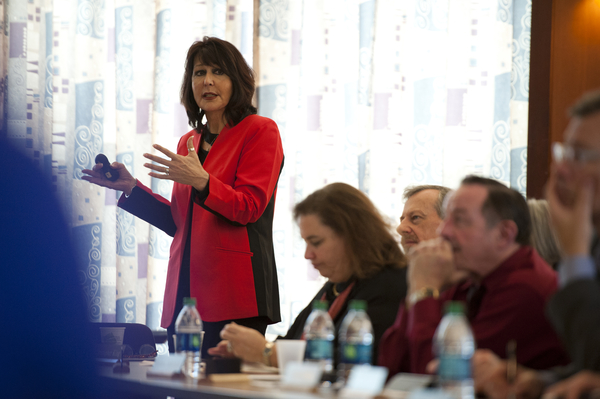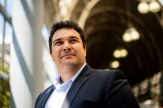Top students continue to choose Northeastern

Northeastern continues to attract the top students from across the U.S. and around the world due to the university’s emphasis on growing areas of interest such as global experiential learning and engagement, research, and combined bachelor’s and master’s degrees, Senior Vice President for Enrollment Management and Student Life Philomena Mantella told the Faculty Senate on Wednesday.
In order to meet these students evolving needs, Mantella said the university has increasingly focused on providing flexible academic programs and an unprecedented level of financial-aid investment—$204 million in 2013-14, the largest total in the university’s 115-year history.
“We are rising to the challenge of the more demanding student,” Mantella told the faculty. “That doesn’t mean there isn’t work to be done. Our work is never going to stop. We are always going to evolve our programs.”
Northeastern received 47,364 applications from prospective students for incoming class in Fall 2013, which represents about a 36 percent increase from the number received for 2007. In addition, the mean SAT score for Northeastern’s most newest class (1390) was the highest in the last seven years, while 64 percent of those first-year students ranked in the top 10 percent of their high school class.
“We have another fantastic class,” Stephen W. Director, provost and senior vice president for academic affairs, said at the meeting. “I don’t think there is any other university that has an organization like we have, and you can see the results.”
Northeastern is not only accepting top students, but the students are staying at the university after their freshman year. Mantella said Northeastern’s retention rate for 2013 is 96 percent, up from 90 percent in 2006. Likewise, the graduation rate has increase from 64 percent in 2000 to 86 percent in 2013.
“This is such a special place,” Mantella noted. “It is an incredibly compelling university and all of what you do with the students is such a transformative experience and that is why we, as an institution, have moved so dramatically.”
Looking forward, Mantella said the university continues to explore new ways to highlight the four-year/two co-op option for students, which complements the traditional path students take with three co-ops in five years. Co-op is the signature component of Northeastern’s experiential learning model. In the 2012-13 academic year, Northeastern had 7,968 co-op placements with more than 2,900 employers in the United States and around the world.
Mantella told the Faculty Senate members that interest in the four-year, two-co-op option is rising. “We need to make this offering more compelling and more accessible,” she explained. “The objective here is to enhance student flexibility and openness to the programs we have so we can meet that market interest and market demand.”
Continuing the university’s commitment to a diverse student body, Mantella said the division of Enrollment Management and Student Affairs is also exploring additional ways to engage and attract more students from African-American, Latino, and Native American families and backgrounds.
Vice President of Enrollment Management Jane Brown noted that last year there was an increase in the number of Latino student applicants
and enrollees, and the university is boosting efforts to connect with prospective African-American students.
“We have really intensified our efforts,” Brown said of increasing African-American student enrollment. “We have done very targeted outreach and are looking at the kind of information we may not be giving them enough of, such as the university’s affordability and financial aid opportunities.”




